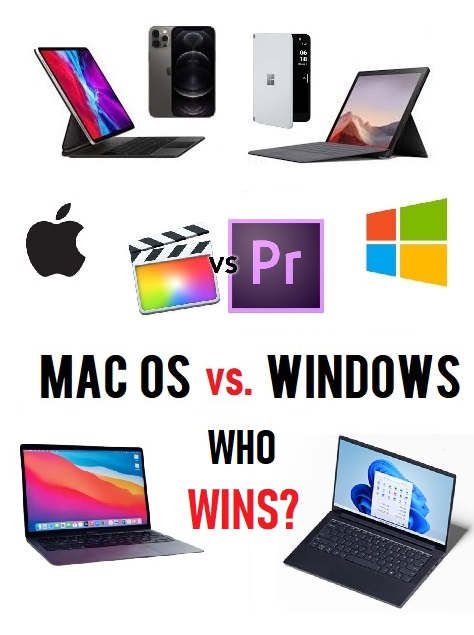The Apple ecosystem offers a seamless and integrated experience across its devices, making it a popular choice for many users. From the latest Mac OS features to the powerful Apple Silicon chips, understanding how to make the most of Mac OS can enhance your productivity and enjoyment. In this guide, we’ll explore how Mac OS handles security, performance, and its compatibility with other Apple devices, along with comparing its software and hardware to other options.

Understanding the Apple Ecosystem with Mac OS
The Apple ecosystem is all about interconnectedness. If you use an iPhone, iPad, or Apple Watch alongside your Mac, you’ll experience seamless integration across devices. Features like Handoff allow you to start a task on one device and pick it up on another without missing a beat.
For example, if you’re working on a document on your Mac, you can continue editing it on your iPhone. This harmony extends to applications like Messages and FaceTime, which work seamlessly across all Apple devices.
How Mac OS Handles Security and Privacy
Mac OS is known for its strong focus on security and privacy. Here’s how it keeps your data safe:
- Gatekeeper: This feature ensures that only trusted software is installed on your Mac. It checks apps for known malware and verifies them against a list of trusted developers.
- FileVault: This encrypts your entire hard drive, making it difficult for unauthorized users to access your data.
- Privacy Controls: Mac OS allows you to control which apps have access to your location, contacts, photos, and more.
These built-in features help protect your personal information from potential threats.
How to Optimize Mac OS for Better Performance
Is your Mac feeling sluggish? Here are some tips to speed it up:
- Close Unnecessary Apps: Running too many apps at once can slow down your system. Close apps you’re not using.
- Free Up Storage: Remove old files and applications you no longer need. Consider using tools like CleanMyMac to manage your storage efficiently.
- Update Your Software: Keeping Mac OS and your apps up to date ensures you have the latest performance improvements and security patches.
- Manage Startup Items: Reduce the number of apps that open at startup to speed up your boot time. You can manage these in System Preferences > Users & Groups > Login Items.
Top Software Available on Mac OS in 2024
Mac OS is home to a range of powerful software. Here are some of the top picks:
- Final Cut Pro: For video editing, Final Cut Pro offers advanced features and a smooth workflow.
- Logic Pro: Musicians and producers will appreciate the depth of features in Logic Pro for music production.
- Adobe Creative Cloud: Includes popular apps like Photoshop, Illustrator, and InDesign for design and editing.
These applications are tailored for Mac users and take full advantage of the system’s capabilities.
The Future of Mac OS: AI Integration
Apple is integrating more AI features into Mac OS to enhance functionality and user experience. AI tools in Mac OS are designed to improve productivity by automating tasks and offering smart suggestions. For example, the new AI-driven features might help with photo organization, suggest email responses, or even assist with content creation.
Comparing M1, M2, M3, and M4 Chips in Apple Devices
Apple Silicon chips have revolutionized Mac performance. Here’s a quick comparison:
- M1 Chip: The M1, released in 2020, marked Apple’s transition from Intel processors. It offers significant improvements in speed and battery life.
- M2 Chip: The M2, introduced in 2022, builds on the M1 with even better performance and efficiency, making it suitable for more demanding tasks.
- M3 Chip: The M3, released in 2023, takes performance up a notch with advanced processing power and efficiency.
- M4 Chip: Expected to offer even more enhancements, the M4 will likely provide further improvements in speed and battery life.
These chips make Apple devices faster and more efficient, catering to both everyday users and power users.
Apple Silicon vs. Intel Processors: What’s Better?
Apple Silicon chips are a significant departure from Intel processors. Here’s how they compare:
- Performance: Apple Silicon generally offers better performance and energy efficiency than Intel processors. They are optimized for Mac OS, leading to faster processing speeds and longer battery life.
- Compatibility: While Apple Silicon provides superior performance, some legacy software designed for Intel processors might require emulation or updates to run optimally on newer Macs.
Overall, Apple Silicon represents a step forward in performance and efficiency, especially for users running demanding applications.
Mac OS Gaming: What You Should Know
Gaming on Mac OS has historically lagged behind Windows, but recent improvements are changing that. Mac OS now supports more games and offers better performance thanks to the Apple Silicon chips. However, if gaming is your primary concern, Windows still has a larger library of compatible games and more powerful hardware options.
Alternatives to Expensive Mac OS Software
If you’re looking to save money on software, there are plenty of alternatives to pricey Mac applications:
- GIMP: A free alternative to Photoshop for photo editing.
- DaVinci Resolve: A robust, free video editing tool that competes with Final Cut Pro.
- Audacity: A free, open-source tool for audio editing, similar to Logic Pro.
These alternatives provide excellent functionality without the high cost.
Mac OS vs. Windows for Software Development
When it comes to software development, both Mac OS and Windows have their strengths:
- Mac OS: Preferred for iOS and macOS development due to its native support for Xcode and other Apple development tools.
- Windows: Offers a wider range of development tools for various programming languages and is often preferred for developing applications for Windows and gaming.
Your choice may depend on the specific platforms and tools you use for development.
Mac OS Compatibility with iPhone and iPad
Mac OS integrates seamlessly with iPhone and iPad, allowing for smooth synchronization across devices. Features such as:
- Continuity: Start a task on one device and pick it up on another.
- Universal Clipboard: Copy text, images, or videos on one Apple device and paste it on another.
- Handoff: Continue tasks like writing an email or browsing the web across your Apple devices.
These features make working across multiple Apple devices efficient and convenient.
How to Set Up Apple Devices for Maximum Productivity
To maximize productivity across your Apple devices:
- Sync Your Devices: Use iCloud to keep your files and settings consistent across all devices.
- Use Shortcuts: Automate repetitive tasks with the Shortcuts app.
- Customize Notifications: Adjust notifications to minimize distractions and stay focused.
Mac OS Battery Life: Tips and Tricks
To extend your Mac’s battery life:
- Adjust Screen Brightness: Lowering brightness can significantly save battery.
- Manage Battery Usage: Check Battery Preferences for apps using excessive power.
- Enable Low Power Mode: This mode reduces energy consumption by adjusting system performance.
Differences Between Windows and Mac OS File Systems
Windows uses the NTFS file system, while Mac OS uses APFS (Apple File System). Key differences include:
- File Management: APFS is optimized for SSDs and offers better performance and encryption.
- Compatibility: NTFS is widely supported on Windows, while APFS is optimized for Mac devices.
Linux Distributions: Which One is Best for You?
Linux comes in various distributions, each with unique features:
- Ubuntu: Known for its user-friendly interface and strong community support, ideal for beginners.
- Fedora: Offers cutting-edge software and technologies, suited for developers and tech enthusiasts.
- Debian: Known for its stability and reliability, often used for servers.
Choosing the right Linux distribution depends on your needs, whether it’s ease of use, cutting-edge features, or stability.
Conclusion
Whether you’re new to Mac OS or a seasoned user, understanding its ecosystem, security features, and hardware options can greatly enhance your computing experience. From optimizing performance to exploring the future of AI integration and comparing it to other operating systems, this guide aims to equip you with the knowledge you need to make the most of your Mac.
If you have any specific questions or need further advice, feel free to reach out or explore more resources to help you get the most out of your Apple devices.














